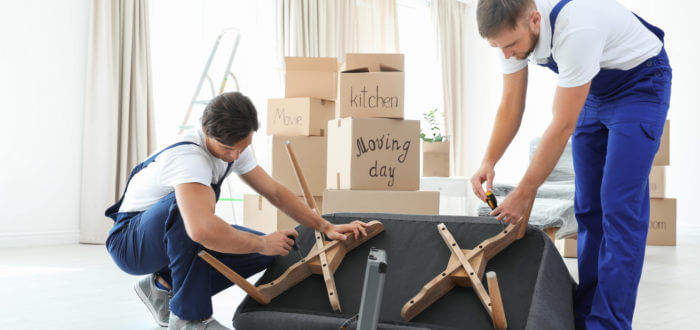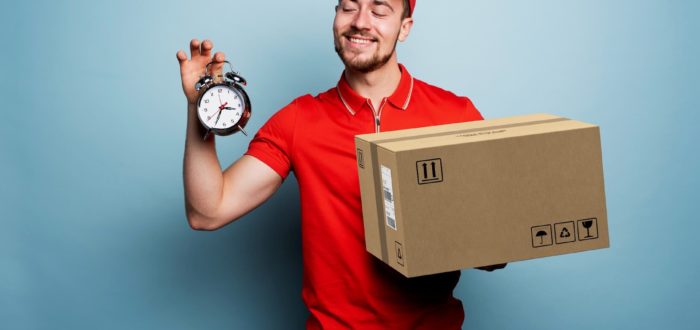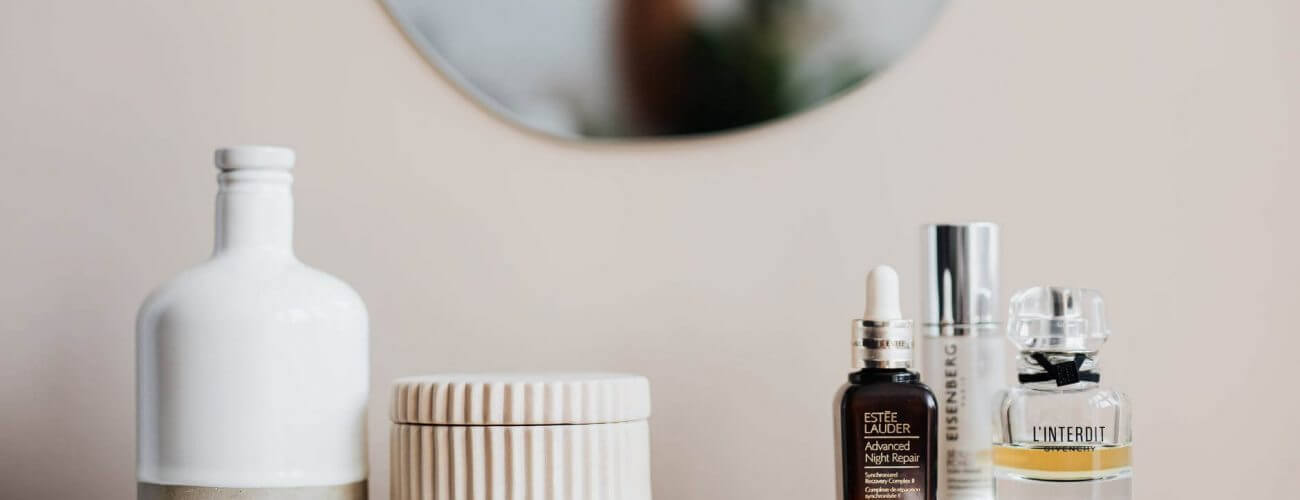

How to Pack Bathroom Items for Moving Efficiently and Safely
Posted in How-to,Moving Tips & Tricks on April 10, 2021
Have you ever stopped to think that the smallest room in your house is most likely the essential one? Since everyone starts a day in this tiny chamber, learning how to pack bathroom items for moving safely is crucial. Let’s face it – you will use this space and its products right before and right after you relocate. Keep your stuff tidy, properly packed, and secure. Read these actionable tips before loading your boxes in a cross-country moving truck.
Why Is Making a Bathroom Packing List the Most Important Step?
Every room in your house demands a different approach and a unique plan and timetable. In this case, you should divide your efforts into three main stages:
- Sort your possessions – Exploring your cabinets and drawers will put you in perspective regarding your washroom inventory and help you come up with a proper schedule.
- Reduce the clutter – When going through your belongings, you should stop for a second and consider decluttering as the ultimate strategy and the best relocation hack in the book.
- Start to pack – Once you embrace these established tactics and conduct them rightly, you can get packed item by item.
If you choose to operate this way, you will:
- Save yourself a lot of time,
- Possibly reduce some relocation costs,
- Have a more pleasant experience when unpacking,
- Track your stuff with ease,
- Overcome relocation stress,
- Avoid spilling, damaging, and potentially hazardous situations.

How Do You Pack a Bathroom for Moving?
Cleaning products and toiletries are considered relocation essentials. Boxing them up adequately is paramount. These are the steps and guidelines you should follow for an organized move:
- Acquire the right supplies and equipment to get packed,
- Sort your things and diminish clutter,
- Create an “essentials” pile and pick some containers for them,
- Direct your attention to the small and decorative items,
- Be extra careful with cleaning products.
Now, before we move on and analyze each step more thoroughly, here’s a bonus tip: while making plans and household inventories, you should be looking for some reliable long-distance movers. If you choose to ask for a relocation service from professional helpers, start researching, requiring quotes, and comparing prices as soon as you can.
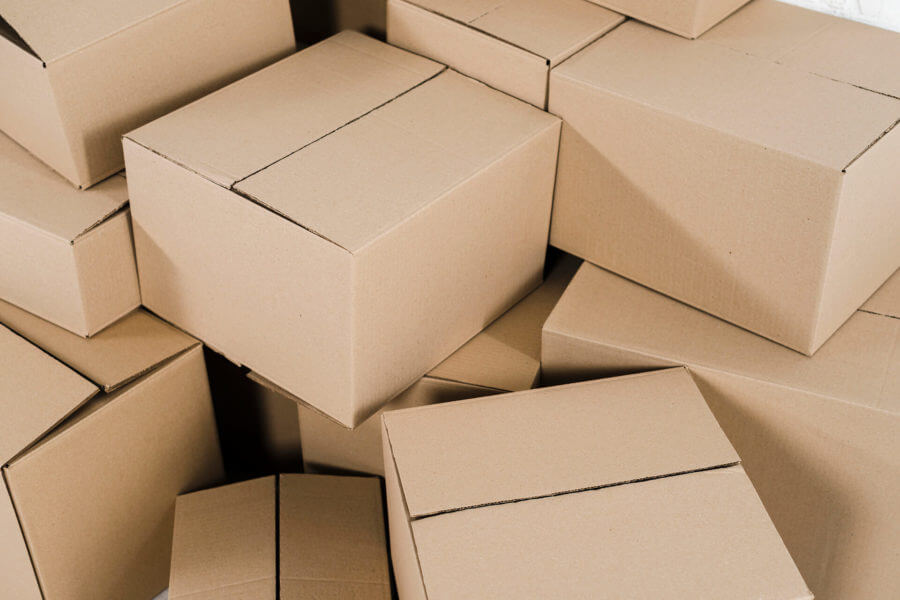
Get the Necessary Supplies and Materials
The exact amounts of packaging materials depend on the size of your household and the number of things you intend to bring with you. For this reason, you should always get just one bit more than you think you’ll need. If so, you’ll avoid running to the store multiple times.
The great thing about these materials is that you could even get them for free. You can always ask the local store owners if they have some extra boxes they’d give you. As for packing paper, there’s room to improvise. If you’re relocating, strive to collect enough of:
- Small and mid-size boxes,
- Packaging paper,
- Tape,
- Markers to label each box, plastic bag, and container,
- Cushion foam pouches,
- Bubble wrap for lighter fragile items.
In case you need some extra help, you can rely on the professional packing service from the cross-country moving company you’ve selected to hire.
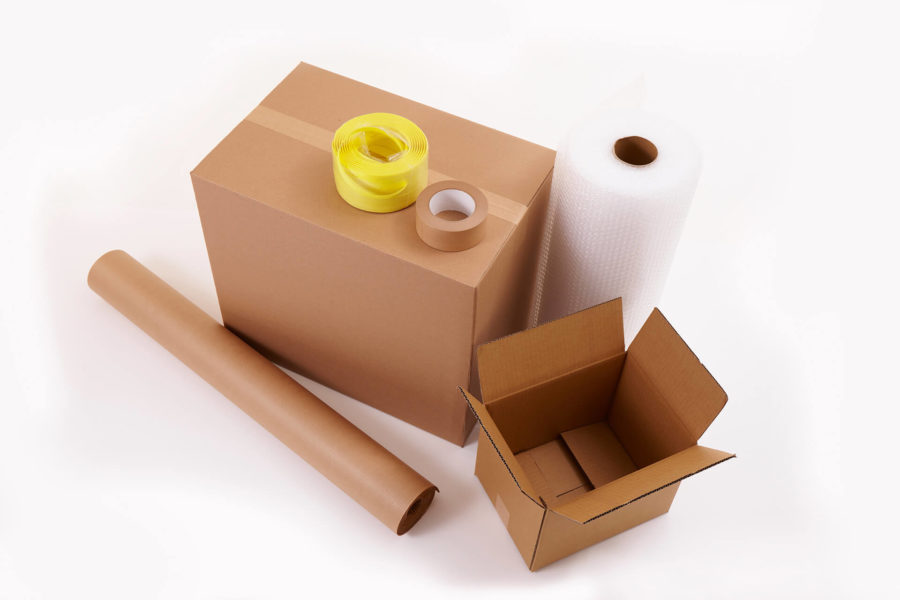
Sort and Purge
While house hunting, you most likely imagine what every brand-new suite you’ll furnish and decorate will be like. Some of your old stuff simply won’t fit in. More importantly, some of the elements you’ve kept in an improvised storage unit (such as a garage or a basement) are obsolete even if it weren’t for the relocation. Reduce the clutter and create extensive checklists and a cross-country moving binder. That way, once you decide what to keep and what to leave behind, you will have it all cataloged, written down, and planned out.
Sorting and Categorizing Step by Step
Although the bathroom is the smallest suite in your home, there are numerous groups of things you should canvas and separate. When going through your drawers and cabinets, you will encounter:
- Appliances (usually small ones, such as a hairdryer, electric razors, etc),
- Cosmetics and makeup,
- Toiletries,
- Cleaning supplies,
- Various paper products,
- Feminine products,
- Medicines (first aid kit and prescription),
- Hair products and accessories,
- Towels and bathrobes.
Also, many bathrooms contain some decorations. Minimalists are often immune to these gizmos, which makes it easier for them to get packed. If you’re not one of them, don’t neglect the aesthetic aspects when determining what you need.
Decluttering and Downsizing Tips
The old, rarely used, damaged, or expired products and appliances only lead to a messy room and could add up to the relocation cost if you choose to bring them along. Hence, decluttering is necessary before you jump to the next step. Also, you should toss:
- Empty or almost empty bottles and tubes,
- Expired cosmetics,
- Expired, ineffective, or unnecessary medicines,
- Old towels, old bathrobes, shabby shower curtains, ragged mats,
- Brushes and plungers.
Pro tip: Instead of immediately tossing the unusable towels, utilize them for packaging and protecting your belongings while transporting them.

Know Your Essentials When Long-Distance Moving
If you were getting ready to pack glasses or your clothes, you would have to consider leaving some out of the luggage and containers. Because, no matter what your reasons for relocation are and how keen you are to reach your new home, you will have to use some stuff in the days prior to the big day. The same rule applies to every room. Every family member should have an “essentials” bag of their own:
- Bring your toothbrush,
- Add the toothpaste into the bag,
- Include some toilet paper and tissues in this list,
- Keep the necessary medication close by,
- Package the needed products for personal hygiene.
These are some of the basic stuff you’ll use before and immediately after relocating. However, every individual will most likely include another item or two and label it as essential. Just make sure not to classify too many extras as must-haves.

Pay Attention to Small, Fragile, and Decorative Objects
The duration and complexity of this step depend on how much extra stuff you have in this room. Some people like to add multiple purely visually pleasing objects.
If you’re one of them, you will need some more packing paper and some cushion foam pouches to get started. Fragile items require additional attention.
Wrap each of them in a pouch or paper and place them carefully in the boxes. You should use hand towels and bath mats to pad them and fill the extra space in your containers.
Packaging the Bathroom Mirror With the Help of the Right Supplies
You should protect all glass and fragile objects with enough packing paper and bubble wrap.
Wrap the bathroom mirror with soft paper and place custom-cut pieces of thick cardboard on top. Tape those pieces over the fragile item to keep it safe from breaking. Lastly, wrap the entire mirror in bubble wrap to avoid any damage.
Use cardboard pieces over wide flat surfaces to keep them from getting damaged during the shift and transport.

Be Cautious With the Cleaning Products
If you’ve picked a DIY relocation, you can carry all the cleaning supplies you want. Just make sure to load and transport them correctly. Always remember to seal the lids tight and place all containers in a plastic bag. The bag must be tied or taped shut.
Make sure that you’ve established the habit of labeling all possessions. When carrying these products, proper marks are crucial. Moreover, you will have to pack these products upright, so there is a minimum chance of spilling during the relocation.
Bonus tip: Since you will need to clean your bathrooms before you move out, leave some sanitation pieces behind. Prepare them for transportation after you’re done using them. Watch this video to see how you can clean up your new home.
How Do You Pack Liquids for Moving Cross Country?
Sorting and preparing the liquid items from your bathrooms demands a bit more planning and care:
- Firstly, you must push the excess air out of plastic tubes and bottles. The air caught inside can cause leaks during transport.
- Wrap all opened containers with liquids in plastic wrap to seal them tighter.
- Pack opened liquids in tightly closed plastic boxes to provide an additional protection layer.
If you intend to hire long-distance movers, know that every professional long-distance moving company is forbidden by law to transport liquids.
What Should You Not Pack When Moving Across the Country?
There are many hazardous products that are not allowed on the moving truck. You mustn’t package any of these:
- Aerosols (which can be found in hair sprays and deodorants),
- Toiletries that contain alcohol (such as mouthwash),
- Flammable products (like nail polish and polish remover),
- Cleaning products that contain harmful chemicals (bleach, for instance).
If you choose to take any such items to your new address, you will need to transport them yourself. Professional cross-country movers won’t load them on the truck because of their dangerous nature.
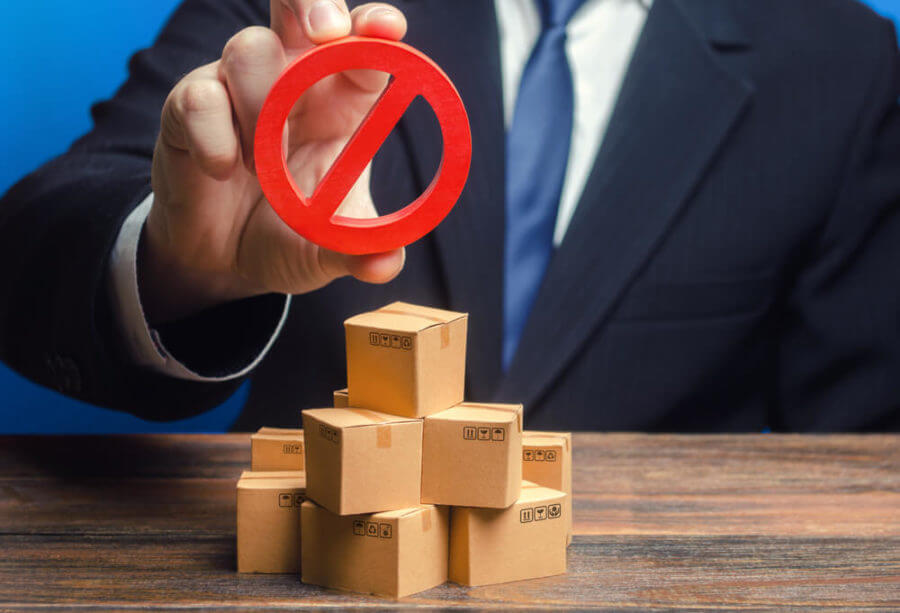
How to Pack Toiletries for Moving Cross Country
Preparing toiletries for relocation can be tricky, as these are usually small in size and large in quantity. Still, if you’ve sorted your bathroom supplies on time, this task won’t be too complex:
- Place each toiletry inside a small, sturdy cardboard box,
- Secure any box holding a liquid product with a towel just in case,
- Pack each of them in their separate toiletry bags or clean paper, plastic, or bubble wrap.
- Label every box and container to unpack easier and give a heads-up to cross-country moving experts that are helping you out.
Carefully load your belongings in the box while adding lots of cushioning between every two items to prevent unwanted contact during shipping. Make sure to place heavier elements first and lighter ones on top.
How Do You Pack Hair Products for Moving?
Packing tips for hair products follow the same guidelines as for all other toiletries and liquids:
- Wrap shampoo bottles, conditioners, lotions, gels, and other liquid hair products to keep them from spilling.
- Put them in sealable plastic bags.
- Place them upright in plastic containers lined with towels.
- Add plenty of cushioning between these products.
- Seal all containers firmly.
- Label them precisely.
- You can put small hair accessories in zip-top bags.
According to Statista, nearly 323 million dollars of bath products were sold in 2018. Since the majority of these are easily replaceable and yet heavy to carry, it would be best if you simply left them behind. When you calculate your complete relocation budget, including tipping the movers, you will see how bringing these products adds to the expenses and consumes your time.
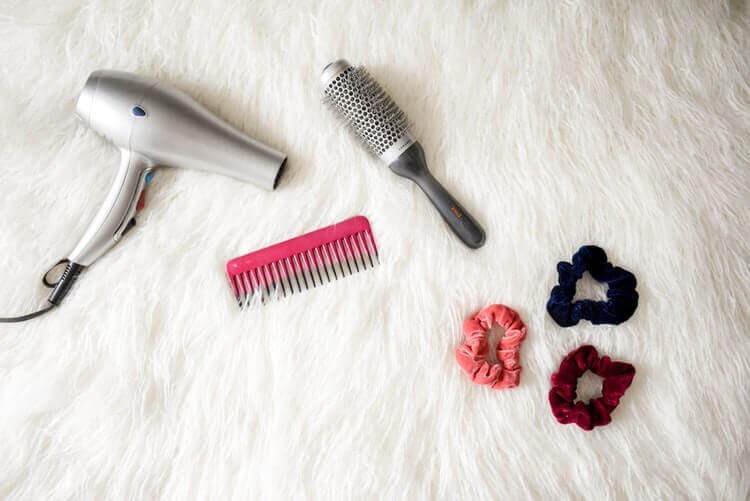
Follow These Tips on How to Pack Bathroom Items for Moving
Learning how to pack bathroom items for moving across the country is vital, whether you’re relocating to another state alone, with family, or with pets. Either way, you will have to follow these simple rules and proven tricks. Start by getting organized and sorting things out. Once you grasp what doesn’t belong in your new household, dispose of it properly.
Also, you could donate some of the unwanted belongings. When you’re done with categorizing and decluttering, you can get packed step by step. If you find out that you lack any packing supplies, contact a reliable cross-country moving company such as Cross Country Movers for help.
We at Cross Country Movers can also help out with storage service if you need it; we offer it free for a month and have top-notch storage units. With us, if you research thoroughly, you’ll avoid long-distance moving scams. Hiring Cross Country Movers guarantees an efficient and stress-free move.
Frequently Asked Questions About How to Pack Bathroom Items for Moving
What Bathroom Items Should I Pack First When Preparing for a Move?
When preparing for a move, pack essential bathroom items first, such as toilet paper, soap, toothbrushes, and towels. These items are used daily and will be needed immediately upon arrival in your new home. Consider packing them in a separate box or bag that is easily accessible during the move.
How Do I Safely Pack Toiletries and Cosmetics for Moving?
To safely pack toiletries and cosmetics for moving, place them in a plastic bag or a leak-proof container to prevent spills or leaks. Use bubble wrap or packing paper to cushion fragile items, such as glass bottles. Pack items tightly together to prevent shifting during the move. Finally, label the box clearly and keep it in a separate, easily accessible location during the move.
What Is the Best Way to Pack Fragile Bathroom Items, Such as Glass Bottles?
The best way to pack fragile glass bottles is to wrap them in bubble wrap or packing paper to cushion them. Place them in a small box or a plastic container and fill any empty space with packing material to prevent shifting. Label the box as “fragile” and keep it in a separate, easily accessible location during the move.
Should I Pack Bathroom Items Separately From Other Household Items?
It’s a good idea to pack bathroom items separately from other household items. This will keep them easily accessible during the move and prevent damage or contamination. Consider packing them in a separate box or bag, and clearly label the box as “bathroom items” for easy identification.
How Do I Pack Bathroom Towels and Linens for Moving?
To pack bathroom towels and linens for moving, fold them neatly and place them in a box or plastic container. You may wrap them in packing paper or a plastic bag to protect them from dust and moisture. Fill empty spaces with packing materials to prevent shifting. Label the box clearly and keep it in a separate, easily accessible location during the move.
What Supplies Do I Need to Pack Bathroom Items for Moving?
To pack bathroom items for moving, you will need supplies such as boxes, plastic containers, packing paper, bubble wrap, tape, and markers for labeling. Consider using small boxes or containers to pack bathroom items separately from other household items. Use packing material to cushion fragile items, and label boxes clearly for easy identification.
How Can I Reduce the Amount of Bathroom Items I Need to Pack?
Declutter and get rid of any expired, unused, or duplicate items. Consider donating or giving away stuff that’s still in good condition. Use as much of your current supplies as possible before the move. Finally, consider purchasing new items, such as toiletries and cleaning supplies, after you’ve settled into your new home.
Should I Dispose of Expired or Nearly Empty Bathroom Items Before Moving?
If possible, you should dispose of expired or nearly empty bathroom items before moving. These may leak or spill during the move and take up unnecessary space.
Check the expiration dates of your items and discard any that are expired or close to expiring. Use up as much of your nearly empty items as possible before the move, and consider donating unused items that are still in good condition.
What Is the Best Way to Label and Organize Packed Bathroom Items for Easy Unpacking?
The best way to label and organize packed bathroom items for easy unpacking is to group similar ones together and label boxes or containers clearly. For example, label one box as “toiletries” and another as “towels and linens.”
Consider using colored labels or markers to easily identify boxes or containers. Keep boxes or containers with bathroom items in a separate, easily accessible location during the move, and unpack them first upon arrival in your new home.
Can I Use Original Packaging to Pack Bathroom Items for Moving?
Using the original packaging to pack bathroom items is especially useful for fragile stuff like glass bottles, designed to be transported safely in their original packaging.
If the original packaging is not available or is not sturdy enough, consider wrapping items in packing paper or bubble wrap and placing them in a small box or plastic container.
How Can I Prevent Leaks and Spills From Bathroom Items During the Move?
To prevent leaks and spills from bathroom items, use plastic bags or containers to hold liquids and wrap bottles or jars in bubble wrap or packing paper. Use packing material to cushion them and prevent shifting during the move. Check that all lids and caps are secured tightly before packing.
Should I Pack Cleaning Supplies Separately From Other Bathroom Items?
It’s a good idea to pack cleaning supplies separately from other bathroom items. This will prevent contamination or damage to other items and make it easier to access cleaning supplies when needed.
Pack cleaning supplies in a separate box or bag, and clearly label the box as “cleaning supplies” for easy identification. Keep the box in a separate but accessible location.
What Should I Do With Bathroom Items That Are Prohibited From Moving, Such as Hazardous Materials?
If you have bathroom items that are prohibited from moving, dispose of them properly according to local regulations. Contact your local waste management facility for information on how to dispose of hazardous materials safely. Alternatively, maybe give them to a friend or neighbor if they can be used safely and legally.
How Can I Make the Process of Packing Bathroom Items for Moving as Efficient and Stress-Free as Possible?
To pack bathroom items efficiently and stress-free, declutter first, pack them separately from other household items, label boxes clearly, cushion fragile items, keep essential items accessible, and ask for help if needed.
Do I Need to Take Extra Precautions When Packing Prescription Medications for Moving?
To pack prescription medications for moving, keep them in their original containers, label them clearly, store them in a cool, dry place, and consider carrying essential medications with you. Consult with your doctor or pharmacist for any special instructions.

